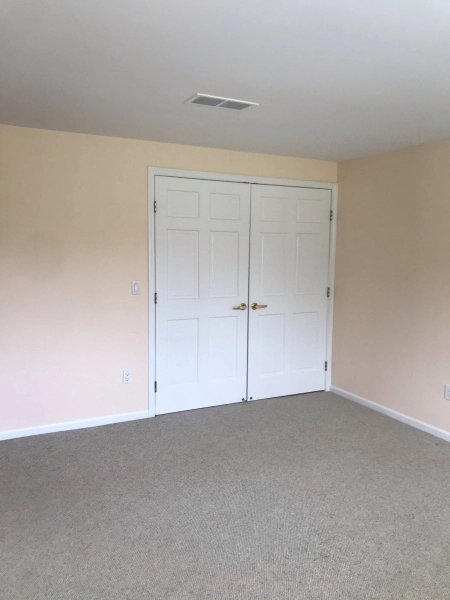Kitchen Painting & Wallpaper Projects, Ann Arbor
If you’re looking for a painting contractor to help give your kitchen a fresh new look, you’ve come to the right place! Here at Lang’s Painting in Ann Arbor Michigan, we specialize in helping homeowners like you achieve the beautiful and stylish kitchens they’ve always wanted. Whether you’re looking to update your cabinets, walls, or any other part of your kitchen, our team of professional painters will be able to get the job done quickly and efficiently. Plus, we’re always happy to work with you to create a custom paint job that perfectly matches your vision for your home. So if you’re ready to transform your kitchen into the space of your dreams, give us a call today!
Painting Your Kitchen: Do’s And Don’ts
Do’s:
- Choose the right paint type: Kitchens are high-traffic areas exposed to heat, moisture, grease, and stains. The right paint type must therefore withstand these conditions. Opt for durable and washable paint, such as a semi-gloss or satin finish that can resist stains and moisture and be easily wiped clean.
- Do properly prepare the surfaces: It is essential to prepare the surface properly for a smooth and long-lasting paint job. Dust, grease, and dirt should be removed from walls, cabinets, and other surfaces. Make sure all rough spots or imperfections are sanded to create a smooth surface for painting. The paint should be primed to ensure proper adhesion and prevent old stains and colors from bleeding.
- Do test paint samples: You should always test paint samples on your kitchen walls before committing to a particular color. The lighting conditions in your kitchen can vary, so it’s a good idea to test paint samples in different areas to see how the color looks. Making an informed decision will help you avoid any surprises after you apply the paint.
- Do use high-quality brushes and rollers: Investing in high-quality brushes and rollers is essential for achieving a smooth and even paint application. Cheap brushes and rollers can result in streaks, brush marks, or uneven coverage. Choose brushes and rollers specifically designed for the type of paint you’re using, and clean them thoroughly after each use to maintain their performance.
- Do apply multiple coats: Applying multiple coats of paint is necessary for better coverage and a more professional-looking finish. Before applying the next coat, let the previous coat completely dry. Make sure you follow the manufacturer’s instructions for drying times between coats. Paint drips, and an uneven finish can result from applying thick coats of paint.
- Protect your surroundings: Properly protecting your countertops, floors, appliances, and other kitchen elements from paint splatters or spills is crucial. Use drop cloths, plastic sheets, or masking tape to cover and protect any areas you don’t want to paint. This will save you time and effort in cleaning up after the paint job is completed.
- Pay attention to detail: To achieve a professional-looking painting, attention to detail is essential. Take your time and ensure that edges, corners, and other intricate areas are properly painted. Keep your hand steady, or use masking tape to achieve clean, crisp lines. Proper attention to detail will elevate the overall appearance of your painted kitchen.
Don’ts:
- Rush: Detailed attention and patience are essential when painting. Refrain from rushing through the process, as it can result in sloppy artistry, uneven coverage, and paint drips. Take your time, follow proper painting techniques, and ensure each coat is fully dry before proceeding with the next one.
- Don’t neglect proper ventilation: Inhalation of fumes or odors released during painting can be harmful. Ensure proper ventilation by opening windows or using exhaust fans to allow fresh air to circulate in the kitchen while painting. If possible, paint when the kitchen is not in use to minimize exposure to fumes.
- Forget to prime: Priming is an essential step that helps the paint adhere properly to the surface and provides a smooth and even base for the paint. Skipping primer can result in poor paint adhesion, uneven coverage, and color bleed-through. Paint over darker colors and glossy surfaces with a primer first.
- Rush the clean-up: Properly clean your brushes, rollers, and other painting tools after each use to ensure longevity and performance. Dispose of paint cans and other materials according to local regulations. Do not pour paint or cleaning solutions down the drain, as they can harm the environment.
- Select clashing colors: You should choose paint colors according to your kitchen’s overall style and color scheme. Coordinate the paint color with your cabinets, countertops, backsplash, and other kitchen elements for a cohesive and visually appealing look. Consider the natural lighting in your kitchen and test paint samples on the walls to see how they look in different lighting conditions before committing to a color.

Free Estimates
When you want a professional job done, you need a professional painting contractor like Lang’s Painting. We are kitchen painting & wallpaper experts. Call today.








